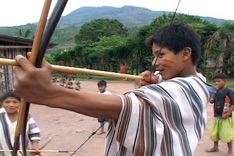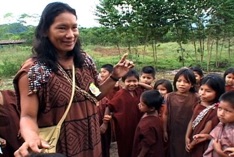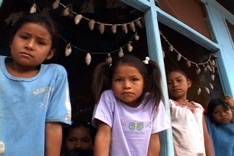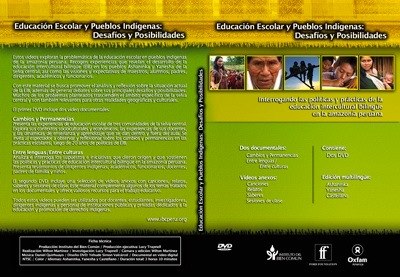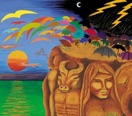
School Education and Indigenous Peoples
Challenges and Opportunities
A three-part film series
This series explores the contemporary situation of school education among the Yanesha and Ashaninka peoples of the Peruvian Central Amazon. It was not until the early 1980s when the dominant approach to indigenous peoples' education was challenged--an ethnocentric method that relied exclusively on translating official curricula into native languages. The new paradigm, known as Intercultural Bilingual Education (IBE), advanced a bottom-up strategy for creating a unique curricula based on native cultures, knowledges, values and practices. These videos look into actual school practices and examine what has been accomplished and what remains to be done. (continues below)
Change and Permanence
Between Cultures
Resource films
-
-
References
-
Alkman, Sheila (1999) Intercultural Education and Literacy. Philadelphia: John Benjamin Publishing Co.
-
Gray, Andrew (1997) Indigenous Rights and Development. Oxford: Berghahn Books.
-
Pasquinelli, Carla (1996) The Concept of Culture Between Modernity and Postmodernity. In Grasping the Changing World: Anthropological Concepts in the Postmodern
-
Era. Václav Hubinger, ed. London: Routledge.
-
Trapnell, Lucy A. (1996) Pueblos indígenas y Currículo: Una Propuesta desde la Amazonía. In Educación e Interculturalidad en los Andes y la Amazonía. J.C. Godenzzi, ed.
-
Cuzco: Centro de Estudios Regionales Andinos Bartolome de las Casas.
-
Trapnell, Lucy A. (2003) Some Key Issues in Intercultural Bilingual Education Teacher Training Programmes--As Seen from a Teacher Training Programme in the Peruvian
-
Amazon Basin. Comparative Education 39(2): 165-183.
-
Trapnell, Lucy, Albina Calderón & River Flores (2008) Interculturalidad, Conocimiento y Poder: Alcances de un Proceso de Investigación en Dos Escuelas de la Amazonía
-
Peruana. Lima: IBC, Oxfam America, Fundación Ford.
-
Zuñiga, Madelaine, Inés Pozzi Escott & Luis Enrique López (Eds.) (1991) Educación Bilingüe Intercultural. Reflexiones y Desafíos. Lima: FOMCIENCIAS.
Initially developed by indigenous organizations, local NGOs and international agencies, by the mid 1980s the IBE was adopted by the Peruvian and other Latin American states. Besides seeking to change practices and attitudes rooted in centuries of colonial culture, some of the biggest challenges IBE proponents faced included creating academic programs to train indigenous bilingual teachers, designing appropriate curricula and materials, and achieving financial sustainability--all endeavors that until now depend heavily on international cooperation. While the model has gained recognition and advances have been made, political conflicts with the traditional state-based educational models persist and indigenous organizations remain vigilant to protect their cultures and languages.
The films featured here are part of a three-year project conducted by the Instituto del Bien Comun and Oxfam America to assess the progress made by IBE and national education policies for indigenous populations. The area chosen for the study was the Central Andean Amazon of Peru, where the Yanesha and Ashaninka peoples are located (see map below).
The project is based on research by Peruvian anthropologist Lucy Trapnell, who participated in the formulation and establishment of IBE policies and has also advised indigenous educational programs and organizations for over 30 years. Funding was provided by the Ford Foundation.
The video material for the series was recorded in the Central Andean Amazon of Peru, 2005-06.
This film series is recommended for teaching about subjects including:
intercultural bilingual education
socialization and enculturation
language and cultural identity
linguistic anthropology
indigenous peoples’ rights
Andean Amazonian cultures
Latin American studies

The complete series is available as a two-DVD package (Yanesha, Ashaninka and Spanish version)
For more information and to purchase the series, please contact Instituto del Bien Comun
Documentary
Advocacy
Creative
EthnoVisions
